How to Set Up Bots
The default account for any ingestion pipeline deployed from the UI is ingestion-bot. To configure ingestion-bot from the UI, go to the settings page and access the Bots tile.
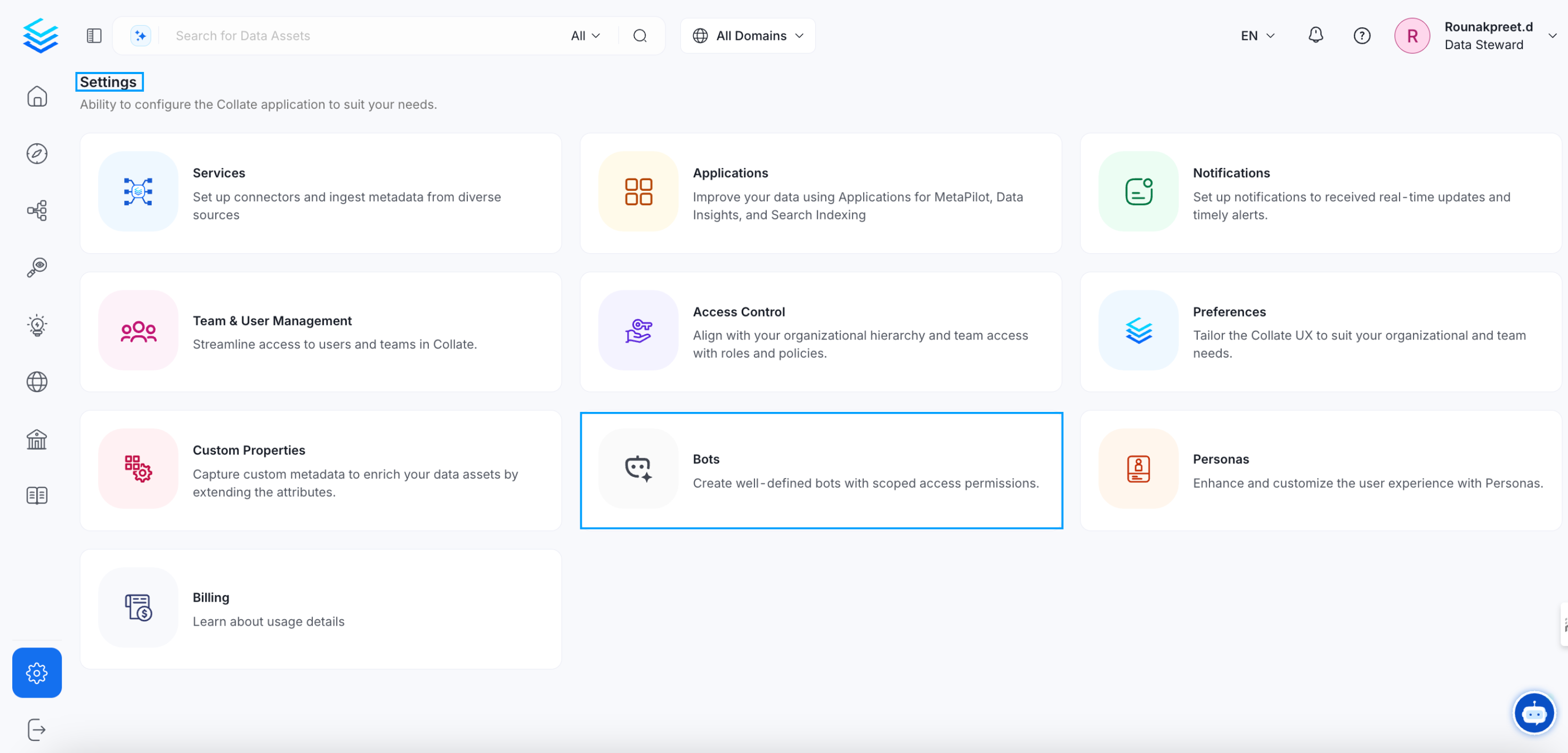
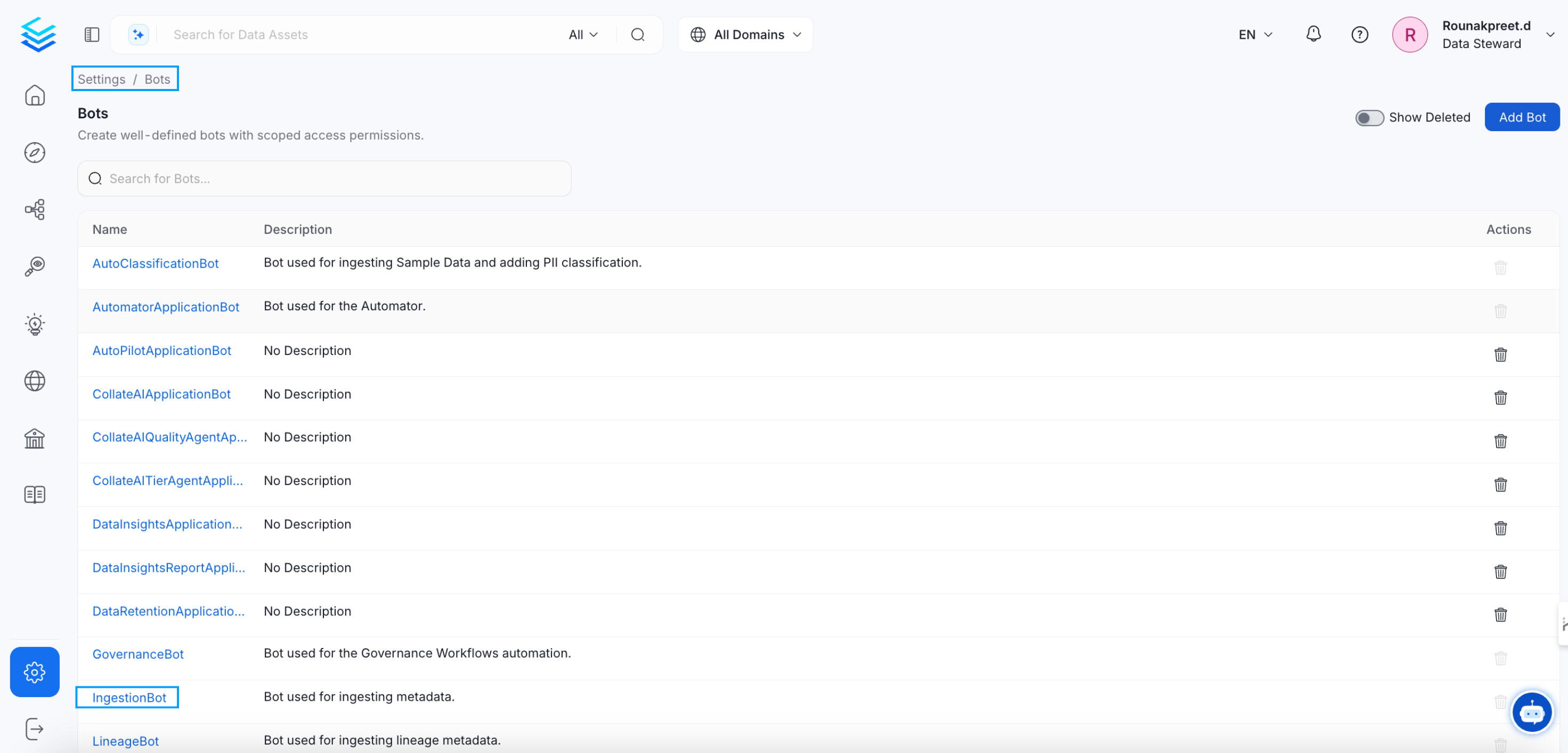
You can either create a new bot or update the existing ingestion-bot.
Update ingestion-bot
Click on ingestion-bot and you will be redirected to it's details page, there you can
- Revoke the token if already present
- Copy the generated token
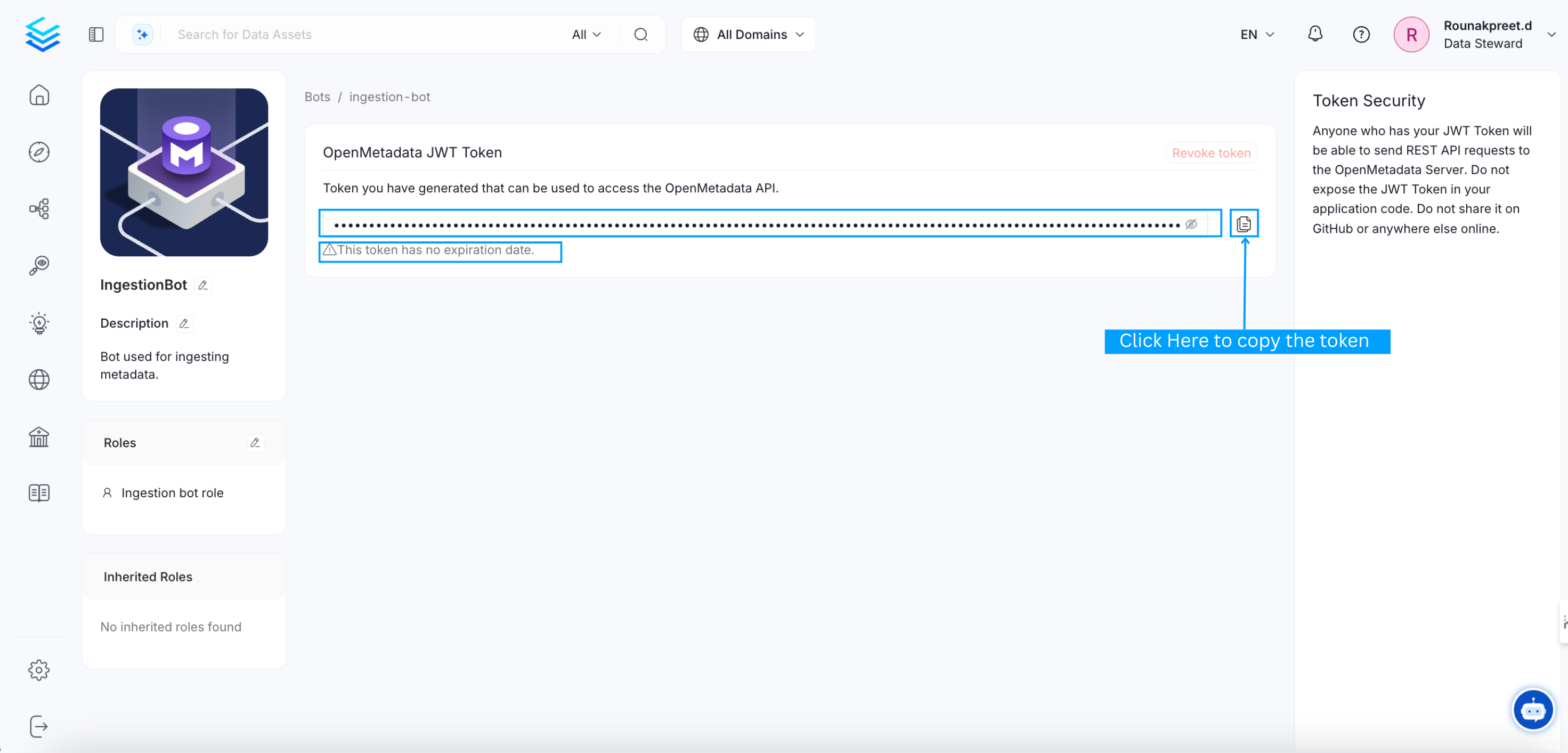
- Generate new token

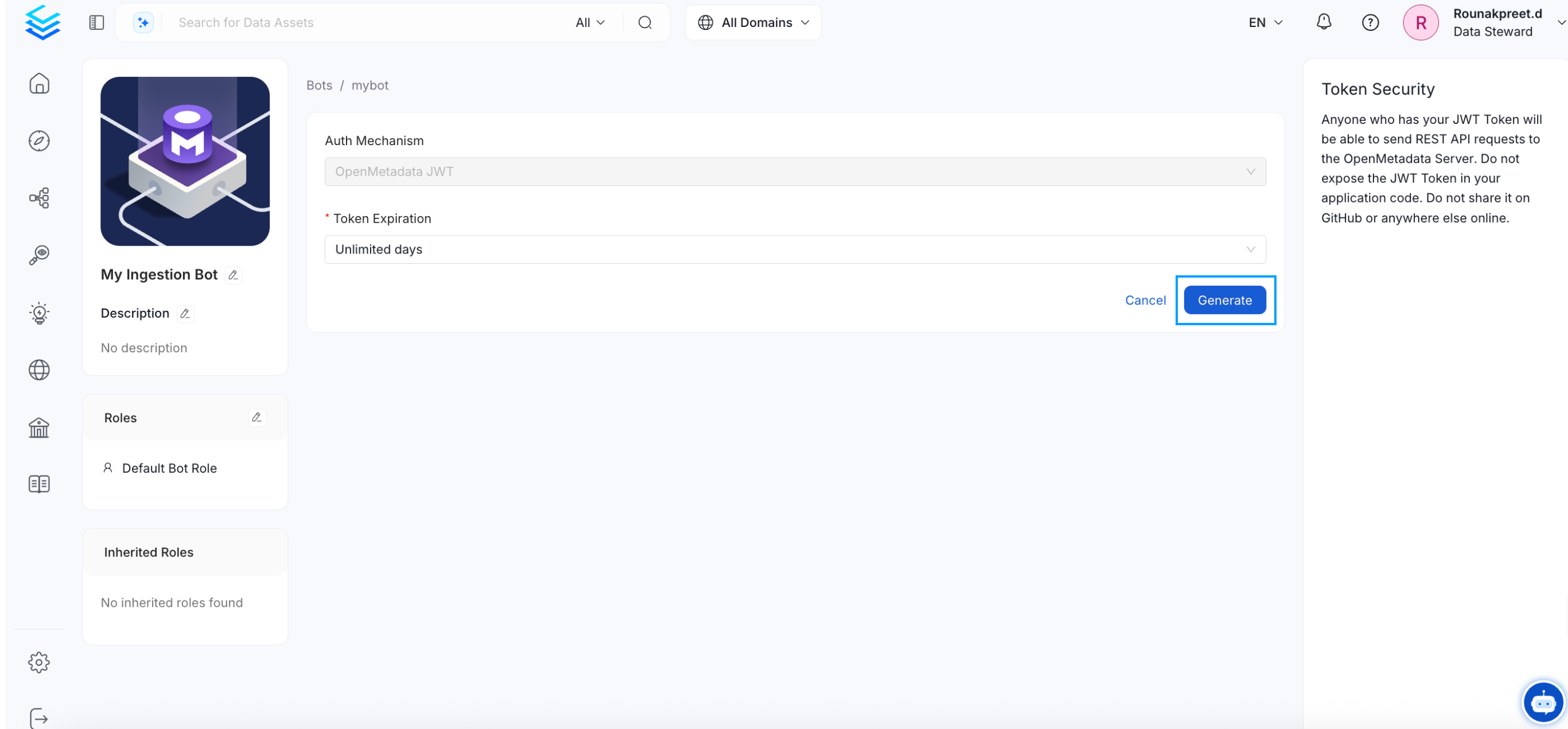
Create a new bot
Click the Add bot button, and you will be directed to the bot creation page. Fill in the required details and then click on the Create button.
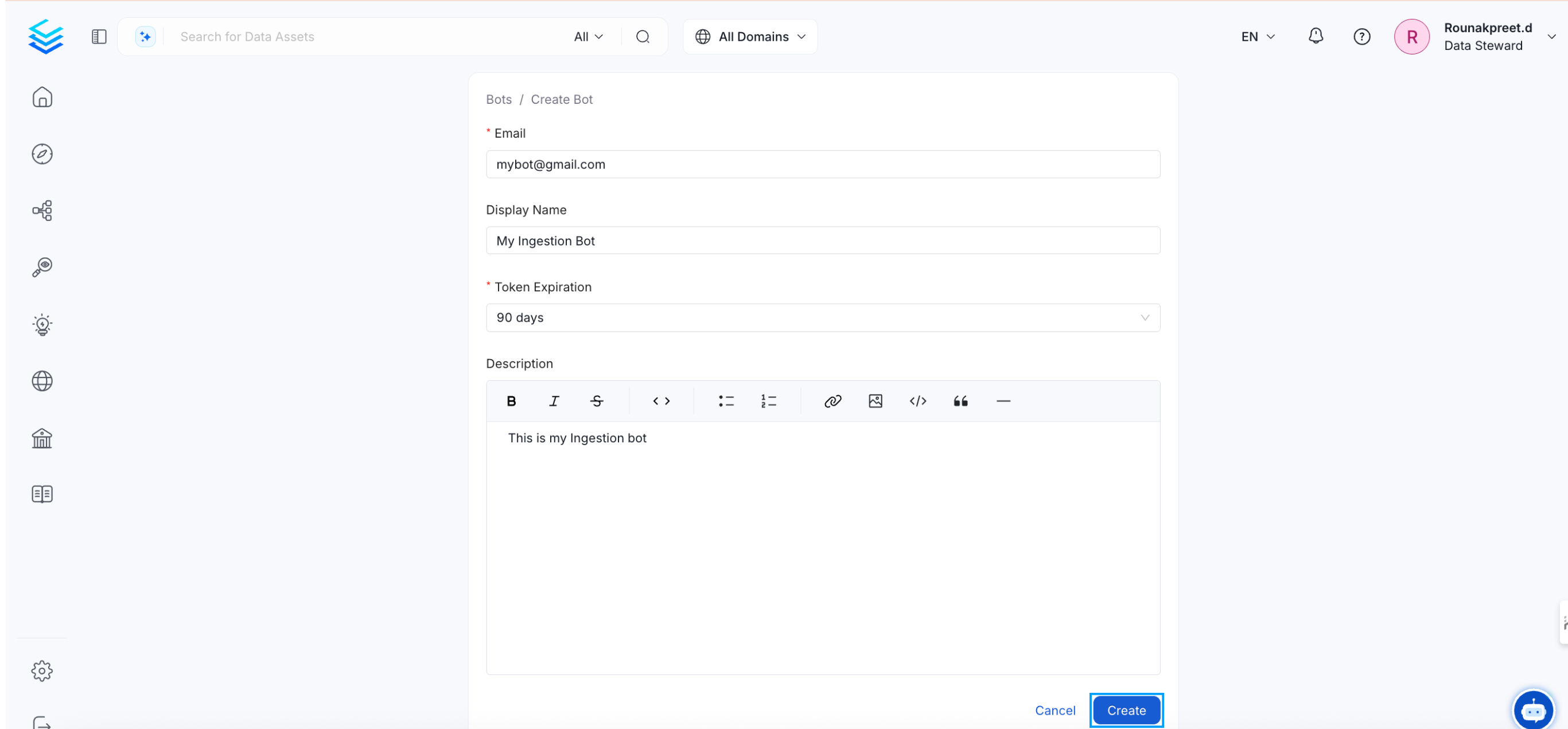
Notes:
1. ingestion-bot
The ingestion-bot bot is created (or updated if it already exists) as a system bot that cannot be deleted, and the credentials used for this bot, if they did not exist before, will be the ones present in the OpenMetadata configuration. Otherwise, a JWT Token will be generated to be the default authentication mechanism of the ingestion-bot.
2. JWT Token auth mechanism
If you decide to configure a JWT Token for the authentication mechanism ensure that you have also the value http://localhost:8585/api/v1/system/config/jwks in your publicKeyUrls list:
- For bare metal configuration:
- For docker configuration, the value to be updated is
AUTHENTICATION_PUBLIC_KEYS:
- In the case of kubernetes, you have to update
publicKeysvalues:
3. Redeploying ingestion pipelines
When the ingestion-bot is updated, we must redeploy our ingestion pipelines since the credentials used by the bot have been updated, and they will no longer be valid.
Default System Bots
OpenMetadata ships with several predefined system bots that are essential for automating core metadata operations.
These bots have scoped access and are used by the platform to execute ingestion pipelines, metadata processing tasks, governance automation, and more.
These bots are created by default during installation and can be viewed under:
- Settings → Bots
List of Default Bots
| Bot Name | Description |
|---|---|
| AutoClassificationBot | Detects and tags PII/sensitive data using sample data and classification rules. |
| AutoPilotApplicationBot | Orchestrates automated metadata actions like enrichment and policy execution. |
| DataContractValidationApp | Validates data contracts for schema consistency and contract adherence. |
| DataInsightsApplicationBot | Generates insights on data quality, usage, and ownership for dashboards. |
| DataRetentionApplicationBot | Enforces data retention policies by identifying and managing expired data. |
| GovernanceBot | Automates policy enforcement, approvals, and stewardship notifications. |
| IngestionBot | Runs metadata ingestion pipelines to sync external sources with OpenMetadata. |
| LineageBot | Captures data flow and dependencies to build and update lineage graphs. |
| McpApplicationBot | Processes metadata change proposals like updates to tags or ownership. |
| ProfilerBot | Ingests profiling stats and sample data to assess and monitor data quality. |
| SCIM Bot | Syncs user and group data via SCIM protocol for identity management. |
| SearchIndexingApplicationBot | Keeps the search index updated for accurate metadata discovery. |
| TestSuiteBot | Executes data quality tests and tracks results for validation and reporting. |
| UsageBot | Collects usage metrics to analyze data popularity and user interactions. |
JWT Configuration Note
When using JWT-based authentication, each bot that executes ingestion or metadata operations may require its own valid JWT token.
This includes bots such as:
LineageBotProfilerBotTestSuiteBotIngestionBot
Make sure you:
- Generate a JWT token for each relevant bot.
- Match the correct
Key ID (kid)and public/private key file paths. - Redeploy ingestion pipelines so the bot picks up the new JWT configuration.
If JWT tokens or key IDs are mismatched, ingestion pipelines (especially lineage) may fail with internal server errors.